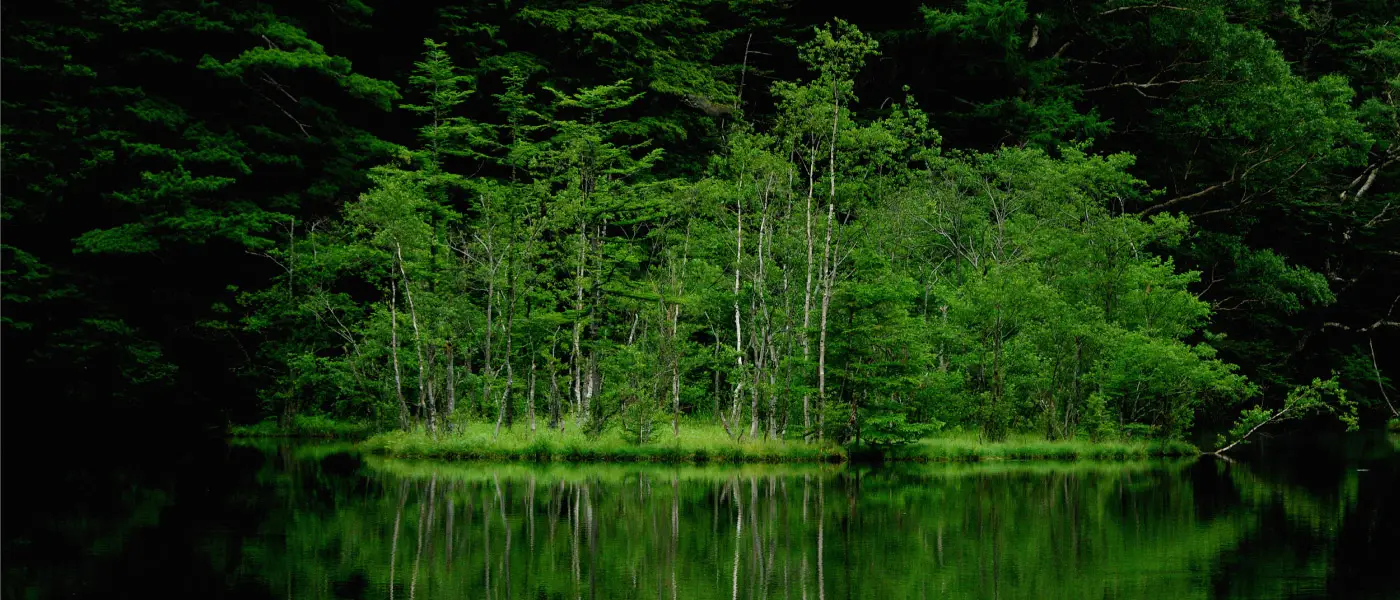The spirits of the air live in the smells
Of fruit; and Joy, with pinions light, roves round
The gardens, or sits singing in the trees.
--William Blake, "To Autumn"
As we turn the corner into October, the arrival of Autumn is being felt even in the warmer urban areas of Nagano. From now on, cooler temperatures will gradually oblige school children to don their blazers for the first time since spring. On clear days, mountainous horizons are set against skies of glorious azure, often without a cloud to be seen and the summer haze which can sometimes obscure our view of more distant mountains has all but vanished.
To anyone familiar with hiking, the fact that autumn comes to the mountains earlier than it does to lower elevations is just common sense, so it should come as no surprise to find the golden season in full swing at Kamikochi.

In truth, Kamikochi's celebrated autumn foliage has not yet arrived in earnest. Everywhere you look, the leaves are beginning to show signs of changing color, all the more so at higher elevations. Still, we'll have to wait a little longer for true 紅葉 ("kouyou" or "momiji"), as the Japanese call it.


That said, the azure skies which are one of the main features of the so called "akibare," are currently dazzling visitors from all around:

When the time is right, we'll get a combination of the two: rich autumn foliage and clear blue skies which will complete the autumn experience and, ineviatbly, bring huge crowds to the park.
All of this comes for a price. Autumn is also the same when flowers begin to vanish in great numbers. Here, a bunch of Anapahlis margaritacea (familiar to Americans and Canadians as the "western pearly everlasting") puts up a brave fight against the inevitable onset of cold weather. Inspiring and perhaps a little sad, but that's the whole "dance of the seasons" thing for you, in'nit?

In trade for that, we get lots of colorful, seasonal fruit, like the viburnum opulus (or "guelder rose") seen here:

As it turns out, these berries had deep symbolic value for early Slavic pagans who associated them with the creation of the universerve.
At risk of stating the obvious, you must not eat these particular berries which--even if they weren't acidic in flavor and mildly toxic--are protected by conservation rules common to all national parks. So yes, look with your eyes not your hands. Apologies for being so pedantic...again.
But, as long as we're on these topic, here are some more enticing-looking berries that you're not allowed to eat:

Ahem.
I'm sure we've metnioned this already, but as temperatures continue to drop warmer and warmer clothing will gradually become necessary for visitors wishing to stay safe and comfortable during their visit. In particular, morning temperatures continue to dip toward zero in areas and this will become an important consideration for anyone heading up to Karasawa to experience the peak period for autumn foliage later this month.
In short, plan carefully, pack what you need, and stay safe!

As always, we will be continuing our coverage of the autumn season and keep the updates coming as things develop. Please visti our Facebook page with any comments or questions you might have: (https://www.facebook.com/kamikochi).
Sources of Information:
National Park Guide website: http://npg-alps.net
National Parks Foundation website: http://www.bes.or.jp
Kamikochi Taishoike Hotel website: http://www.taisyoike.co.jp




